Products
Products
LC system
The Acquity UPLC I-Class system from Waters is designed to provide low system dispersion and carryover. According to the company, the system maximizes peak capacity, advancing chromatographic separations and optimizing the performance of mass spectrometers. Waters Corporation, Milford, MA;

MS systems
Bruker's Scion SQ mass spectrometer is designed for chromatography applications. The system reportedly is available with two GC systems: the model 436 GC system and the larger 451 GC system. According to the company, the mass spectrometer features axial flow through the source and a compound-based screening function designed to simplify method setup for complex mixed full-scan SIM methods. Bruker Daltonics, Billerica, MA;
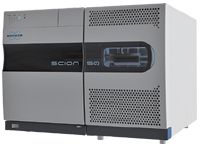
Ion-trap mass spectrometer
1st Detect's MMS-1000 ion trap mass spectrometer is designed for applications in the laboratory and where transportability, low cost, or a minimal benchtop footprint is required. According to the company, the instrument can be adapted to applications with multiple inlet configurations, customizable software, and broadband analysis capability. 1st Detect, Austin, TX;
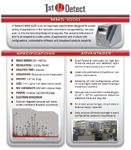
MALDI-TOF-MS system
Shimadzu's AXIMA Mega TOF system combines the company's linear MALDI-TOF mass spectrometer with a CovalX high-mass detection system. According to the company, the system detects macromolecules up to 1500 kDa. The system reportedly is also equipped with a conventional detector for samples less than 20 kDa in mass. Shimadzu Scientific Instrments Inc., Columbia, MD;

ICP–MS system
The Agilent 8800 triple-quadrupole ICP–MS (ICP–QQQ) is designed to provide MS-MS operation for controlled and consistent interference removal in reaction mode. According to the company, the instrument can be used for the analysis of problematic elements in samples across a range of applications, including life science, soil, rock, and plant materials. Agilent Technologies, Santa Clara, CA;
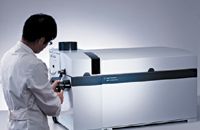
Microchannel plates
The L3N performance option for Photonis' microchannel plates is designed to provide a reduction in background noise. According to the company, any of its microchannel plates can be ordered with the low-noise performance option. With the noise-reduction system, the plates' dark count level reportedly is 0.01 counts/s/cm2, approaching the background level of cosmic rays. Photonis USA, Sturbridge, MA;

LC–MS-MS spectrometer
Thermo Fisher's Q Exactive benchtop LC–MS-MS is designed to combine high performance quadrupole precursor selection with high resolution, accurate-mass Orbitrap detection. According to the company, the instrument is suited to untargeted or targeted screening and is capable of a range of qualitative and quantitative applications. Thermo Fisher Scientific, Waltham, MA;
www.thermoscientific.com/qexactive
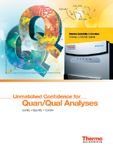
UHPLC injector
Valco's Cheminert C72 UHPLC injectors, switching valves, and selectors are designed for high-speed, high-throughput techniques that require a valve and fitting system that minimizes internal volume and eliminates dead volume. According to the company, the injector features a stator coating that permits pressures up to 15,000 or 20,000 psi. Valco Instruments Co., Inc., Houston, TX;
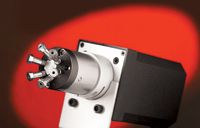
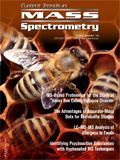
LIBS Illuminates the Hidden Health Risks of Indoor Welding and Soldering
April 23rd 2025A new dual-spectroscopy approach reveals real-time pollution threats in indoor workspaces. Chinese researchers have pioneered the use of laser-induced breakdown spectroscopy (LIBS) and aerosol mass spectrometry to uncover and monitor harmful heavy metal and dust emissions from soldering and welding in real-time. These complementary tools offer a fast, accurate means to evaluate air quality threats in industrial and indoor environments—where people spend most of their time.
NIR Spectroscopy Explored as Sustainable Approach to Detecting Bovine Mastitis
April 23rd 2025A new study published in Applied Food Research demonstrates that near-infrared spectroscopy (NIRS) can effectively detect subclinical bovine mastitis in milk, offering a fast, non-invasive method to guide targeted antibiotic treatment and support sustainable dairy practices.
Smarter Sensors, Cleaner Earth Using AI and IoT for Pollution Monitoring
April 22nd 2025A global research team has detailed how smart sensors, artificial intelligence (AI), machine learning, and Internet of Things (IoT) technologies are transforming the detection and management of environmental pollutants. Their comprehensive review highlights how spectroscopy and sensor networks are now key tools in real-time pollution tracking.